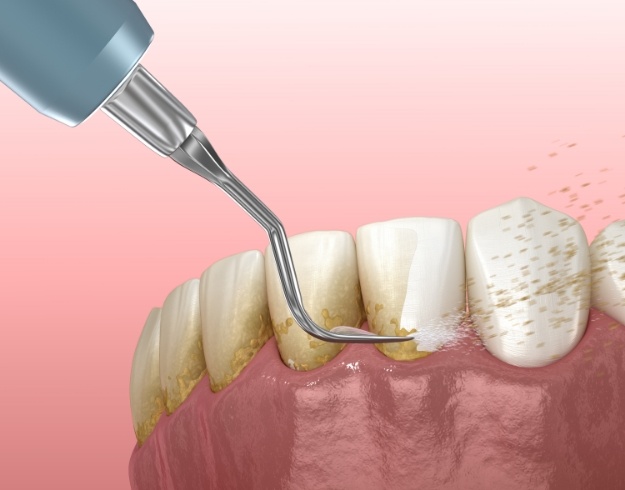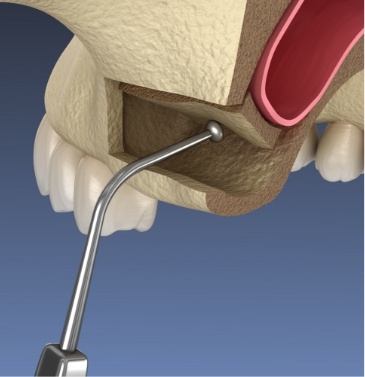Gum Disease Treatment & Periodontal Care Orlando
Promoting Lasting Wellness By Battling Gum Disease
Did you know that nearly half of all adults over the age of 30 suffer from some form of periodontal disease? What’s worse is that it often develops under the radar, meaning that your smile might be silently suffering from its ravaging effects. Fortunately, it’s possible to treat these infections and prevent them from worsening. Better yet, we have an in-house periodontist on our staff, meaning that if you’re in need of complex care, it can happen under the same roof. If you think you might be suffering from gum disease, don’t wait around for it to resolve itself – it won’t! Instead, call our office today to schedule a consultation and learn about gum disease treatment in Orlando.
Why Choose Premier Dental Care of East Orlando for Gum Disease Treatment?
- In-House Periodontist for Streamlined Care
- Numerous Gum Disease Treatment Options Available
- Comfortable Office with Patient-Friendly Amenities
Symptoms of Gum Disease

Gum disease isn’t always obvious; it’s possible for some patients to experience very mild symptoms or no symptoms at all. But to give you an idea of some of the most common and observable symptoms, here’s what you should keep an eye out for:
- Swollen and tender gums that bleed easily
- Reddish gums (healthy gum tissue is pale pink in color)
- Pain when biting or chewing
- Loose teeth
- Receding gums
- Chronic bad breath
- A change in the way your teeth fit together
Scaling & Root Planing

If caught early enough, the bacteria responsible for gum disease can be kept under control with standard routine dental cleanings. However, things don’t always go as planned, and it’s possible that you can develop a more advanced case that requires more extensive treatment. This is where scaling and root planing enters the picture; this treatment involves carefully clearing out bacteria from beneath the gumline and then smoothing out the roots of the teeth so that the gum tissue can healthily reattach itself.
Antibiotic Treatment

We might need to prescribe an antibiotic to treat your gum disease, but rest assured, this is a fairly small commitment on your part. Typically, these medicines work by targeting and eliminating the bacteria responsible for gum disease. We utilize Arestin, which are small microspheres that we pack into the pockets of the gums that attack the origin of the infection over the course of about two weeks. Whether it’s a short or long-term treatment plan, we’ll work with you to ensure that your gum disease is brought under control.
Advanced Periodontal Care From a True Expert

Periodontal care can be life-changing. Just like any other tissue in the body, infections that originate in the gums can eventually get into the blood stream and travel, putting the rest of your body at risk of infection, too. That’s why we’re thrilled to have a board-certified periodontist on our staff. We want to ensure above all else that your gums are healthy for the foreseeable future!
Gum Grafts

Gum recession is a frequent symptom of gum disease, and perhaps the most obvious sign of its presence. As the gums recede, it exposes the roots of your teeth. This makes them appear much longer than they actually are and can cause patients to have unsymmetrical smiles. It can also create sensitivity to hot or cold liquids and foods. But the worst part is that it makes it much easier for bacteria to attack the roots of your teeth.
During a gum graft, tissue from another part of your mouth, like your palate, can be resourced to an area of your mouth that’s been affected by gum disease. The roots of your exposed teeth can be covered and the gumline can be reshaped to its original, healthy state. Since we use a soft tissue laser for this procedure, pain and discomfort are minimized and the healing process is expedited.
Sinus Lifts

Following the loss of one or more of the upper back teeth due to gum disease, it’s possible for the sinuses to become enlarged, or the sinuses may be closer to the maxilla depending on your natural anatomy. This can make procedures such as dental implant placement difficult, because without enough bone to place them in, they can puncture the sinuses. In these instances, a sinus lift can be carried out. It’s a small surgical procedure that lifts the sinus cavity and fills the added space with bone. It typically takes anywhere from six to 12 months to heal before implants can be placed.
Complex Dental Implants

One of the biggest benefits of having a board-certified periodontist on our team is that it makes the dental implant process easier! Patients with complex cases that require extensive periodontal treatment prior to implant placement can receive all of the care they need here in our office. This also means you’re working with the same team the entire time, which only makes things smoother for everyone involved.
